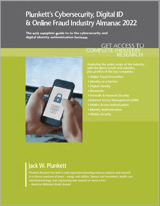The Impact of COVID-19 on the Cybersecurity Market
One of the most dramatic changes caused by the Coronavirus pandemic was an immediate boom in online activity of all types, from ecommerce to streaming of entertainment to wider adoption of online access to financial tools, as well as...

This soaring activity put a severe strain on many existing networks and systems. Unfortunately, it also opened up vast new opportunities for cyberfraud, particularly in the U.S., where trillions of dollars in new government support was offered almost immediately, to businesses, education, households and cities. Much of this aid and support was in the form of easy-to-get business loans, unemployment benefits and household welfare payments. Criminals correctly saw this as a vast opportunity, in particular an opportunity to create false identities or otherwise fraudulent applications for funds. Government systems were overwhelmed and under-protected. Fraud in the PPP (Payroll Protection Program) small business program alone was in the neighborhood of $100 billion. In addition, unemployment benefits claims saw fraud likely totaling from $100 billion to $200 billion—no one really knows the correct amount. Elsewhere, fraudulent activity increased at ecommerce companies and financial companies. Email-based scams proliferated. Ransomware ran rampant—abusing small businesses, large businesses, hospitals and local governmental units. Meanwhile, knowledge workers began working from home in unprecedented numbers. This created millions of new weak points in enterprise security, as these workers’ own devices, their internet activities and their methods of logging into work-related networks created new opportunities for criminals to hack into major systems. As a result, global demand for enhanced cybersecurity solutions and better online identity (digital ID) technologies soared from 2020-2022. There is every reason to think that demand will continue to be extremely strong, and that enterprises and government organizations of all types will spend immense amounts of time and money on cybercrime prevention. The Coronavirus pandemic made it obvious that better habits, better solutions and increased investment in cyberfraud deterrence exist in many areas. For example: Today’s heightened need for enhanced cybersecurity will boost demand for: This detailed report presents a complete cybersecurity market overview—covering cybersecurity market growth, key market segments, and industry trends. Use this report to access up-to-date industry statistics and learn about top cybersecurity companies. Visit the report page using the link above to learn more. Plunkett Research, Ltd. is a leading publisher of business and industry research, with a global client list of top corporations, consultancies, investment firms, universities and government agencies. Our core focus on is on the analysis of industry trends, industry benchmarks, technologies and opportunities. This allows us to leverage our research methodology to deliver accurate, timely information that our clients need to develop business strategies, determine market scope and consider investment opportunities One of the most dramatic changes caused by the Coronavirus pandemic was an immediate boom in online activity of all types, from ecommerce to streaming of entertainment to wider adoption of online access to financial tools, as well as utilization of online education.
One of the most dramatic changes caused by the Coronavirus pandemic was an immediate boom in online activity of all types, from ecommerce to streaming of entertainment to wider adoption of online access to financial tools, as well as utilization of online education.Increasing Investments in Cybersecurity
Opportunities in the Cybersecurity Market
Access a Comprehensive Cybersecurity Market Report
 This article is an excerpt from a newly published report Plunkett's Cybersecurity, Digital ID & Online Fraud Industry Almanac 2022 by Plunkett Research, Ltd.
This article is an excerpt from a newly published report Plunkett's Cybersecurity, Digital ID & Online Fraud Industry Almanac 2022 by Plunkett Research, Ltd.About Plunkett Research, Ltd

 Tfoso
Tfoso 
































